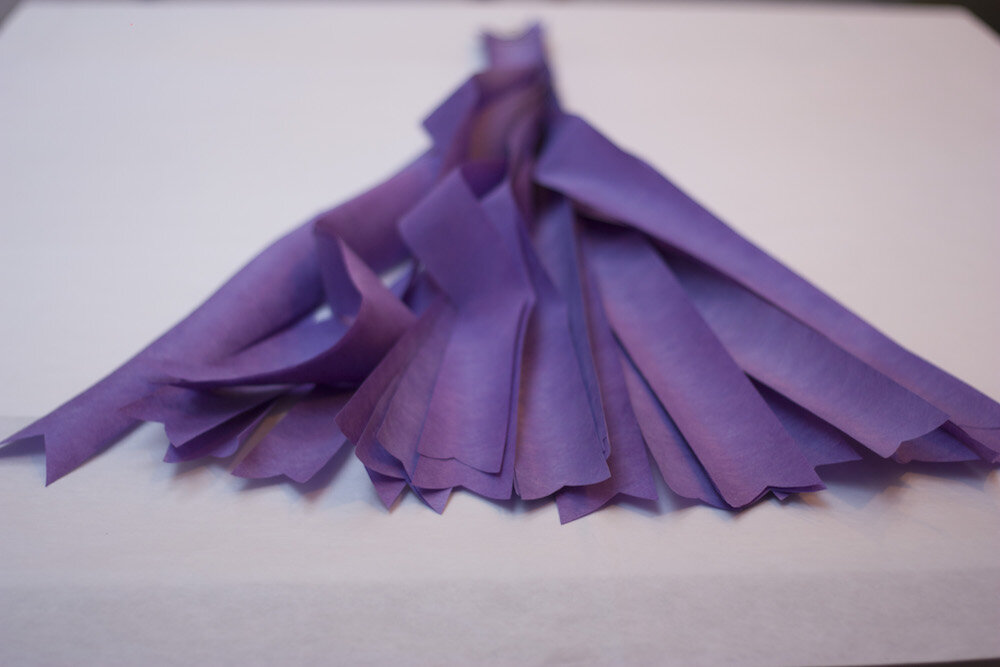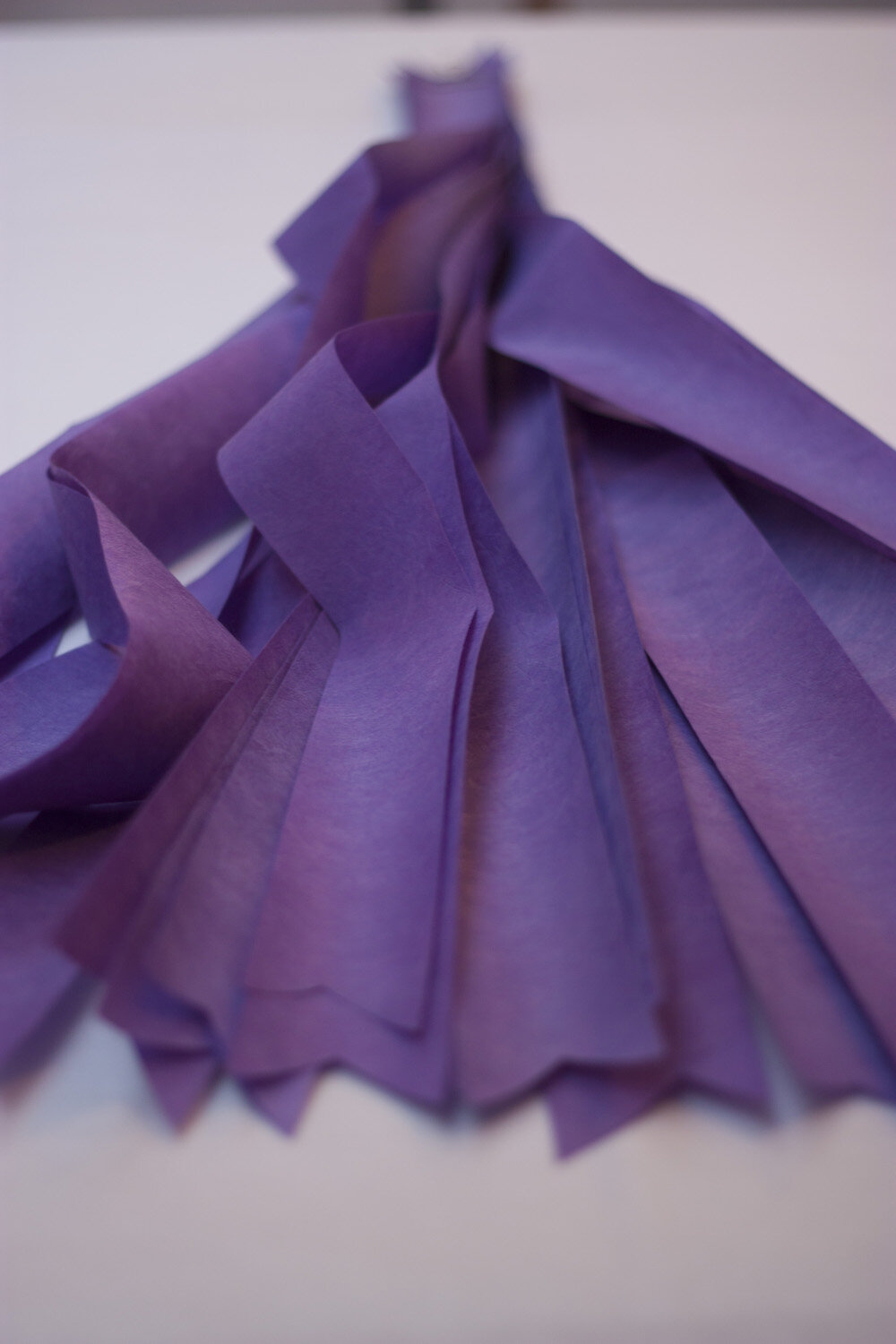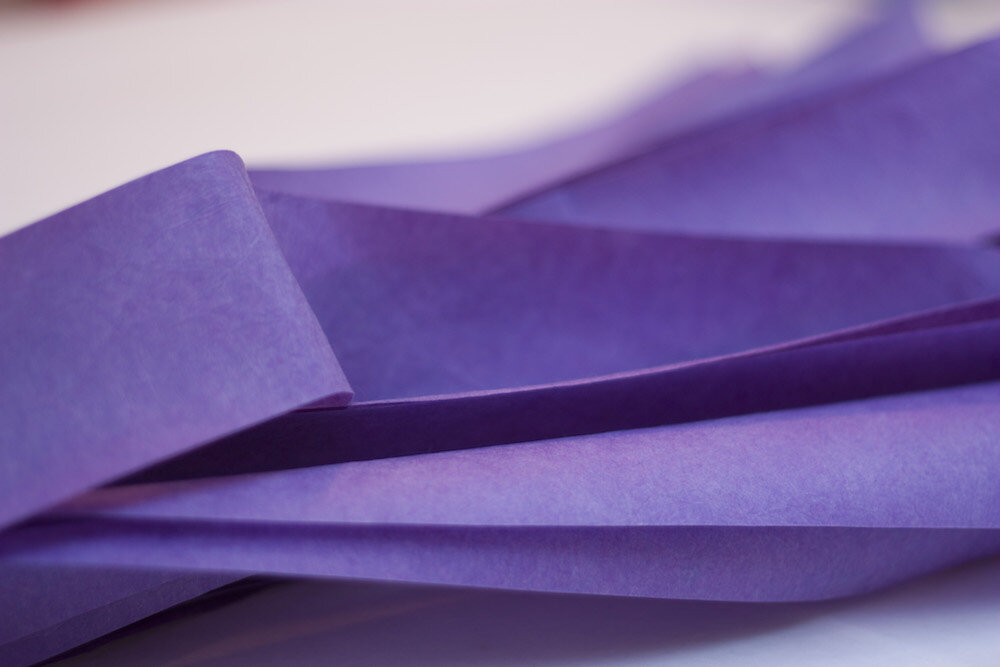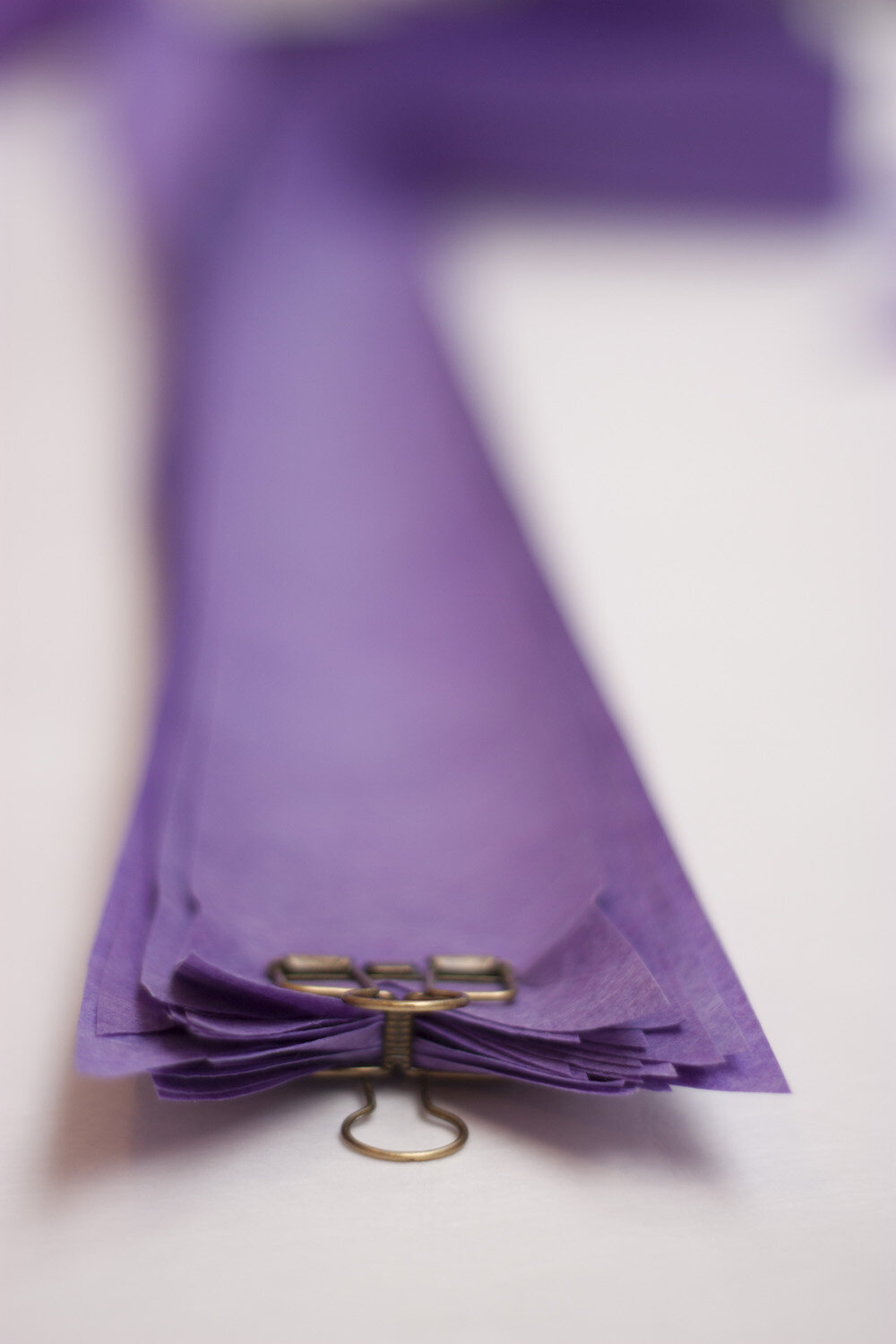Brown Mermaid
The Sunlit Project and UNUM Magazine present HER JOURNEY, a narratology mapping the unique and universally-shared experiences of women’s extraordinary journeys.
“This Sunlit Project developed during the worldwide pandemic over my kitchen table, but the idea of mapping women’s journeys began with my own, as a migratory mother, driving a thousand miles westward. I encountered commonalities and differences within the Hero’s Journey, a mythologically-informed template that identifies the classic elements of a “journey” - a call to something more, obstacles, a supreme ordeal, transformation and more - but it overwhelmingly centers a male archetype. Thus, HER JOURNEY seeks to lift the “her” in the Hero’s Journey and identify what makes it uniquely and universally female.”
-Sun Cooper
Photographed in the Pocono mountains by Alison Conklin @alisonconklin with Alisa Tongg @alisatongg at @sanctuaryatgiantsfoot for the annual Full Circle Meal, Creek Dinner event. Gown by Aubrie Costello @xoaubriecostello X @kkco. #blscreekdinner
Karina Puente is a Mexican-American artist descended from a great-great-grandmother who crossed the border between Mexico and Texas to hand-deliver her seamstress work to clients. Karina’s art reflects her Mexican cultural heritage, particularly of the Santa Ynez Valley in California where she grew up. Years later, Karina traveled from one coast to the other on an intuition that her career would soar in the West but she would find love in the East. In Philadelphia, she plunged herself into the phileo – the Greek word for love that inspired her new city’s namesake – and founded a diverse women-led visual arts studio that specializes in bringing “the muse” to the table. I virtually meet with Karina in her studio, a bright enclave of color story undulating in jade green, marigold yellow, coral red, and ocean blue. Like her watercolors across world galleries and her hand-dyed work stirred over a kitchen stove, her journey moves in both light and shadow, led more by a muse than a map. We dive deep into cultural ancestors, ancient mermaids, and art that transcends borders.
SC: When did you feel a “call to something more”?
KP: I grew up in Central California, where the light is unreal. I would draw and paint landscapes and the people I loved because I wanted to bring that beauty into my surroundings and make that tangible for my family and friends. My original studio – in my bedroom in my Mom’s home – was where I explored the depths of my interiority. The interior life where we are limitless – I’m touching my belly as I say this – it’s almost as if it was cultivated in my belly first with delicious food. In my Mom’s home, everyone was working and finding ways to sustain and nourish themselves between double shifts. My last name is Puente, which means bridge. The correlation between nourishment and work is something I’m bridging right now. This feeling – of wanting to show the people around me how beautiful they really are or how to express the dynamic of light and shadow – was my original calling.
My last name is Puente, which means bridge. The correlation between nourishment and work is something I’m bridging right now.
SC: In your artistic journey, who helped you along the way or served as a mentor?
KP: The mentorship I receive now is through my elders, particularly my Tías, whom I highly regard. This deeper appreciation for my ancestors happened later, as I became an adult and wanted to know more of their wisdom. We come up with a process of how to love what I do – as I work in the kitchen, prepare my food, prepare my materials for art. Because this is very often where we receive insights on how to make our lives nourishing and delicious. This is ritual – Indigenous ritual – where we can hear whispers from the mother of invention.
Portrait of Tía Carmen. “She’s easy on me. Always with open arms, delicious food and the perfect story. Ready to keep us nourished, refreshed and in love with our lives.” Photographed on the California central coast by Karina Puente.
My art teacher mentored me during my coming-of-age; Connie Rohde helped shape and fortify my creative resolve. Once I was discovered by a gallery owner, Connie would drive me to the gallery because I wasn’t yet 16 and my mom was working. Connie allowed me to use my class time to create my work that would become part of my solo exhibition. In high school, she helped me with entrepreneurship by helping me apply for college scholarships and grants. Through those efforts, I sold my work, helped my family, got my first car, and went where I needed to go. Now, I’m always on the tail of my art as it swims internationally; the work leads the way.
SC: You speak to a deep connection between your art and your ancestors. Your Papel Picado installations are modern interpretations of Mexican folk art. Your practice invokes blessings from your ancestors. Can you talk about the cultural preservation in your work?
KP: The same philosophy that went into my ancestors’ work goes into my art: it’s created in what’s considered hand work or women’s work – sewing, washing, cooking over high heat, ironing. (She laughs, I only iron in my art.) What has been formerly relegated to women’s work is put on display as art in museums, cultural centers, and events. I go to my Tías because they know how to do the long journey; they are still feeling good and refreshed. I’m like, tell me more. Always before I leave their house, my Tías give me a blessing. In my work, I refer to a blessing as a focused intention for my wellbeing for my steps ahead. Once I realized that attention to my wellbeing helps me and everyone around me and beyond, I knew this was their wildest dreams coming true.
Karina Puente with Ribbon in studio session
Karina’s art has been exhibited in the Corcoran National Gallery, Weeksville Heritage Center in Brooklyn New York, Columbia University, Miami MoCA, Elverhoj Museum of History and Art, the Museum of International Folk Art in Santa Fe, the Philadelphia Museum of Art, and the Studios at Mass MoCA. I comment on how remarkable it is to have been recognized before the age of 16. I ask if anyone has ever called her a prodigy. She smiles, That word was floated around. Even her verbs are fluid, as if she’s learned to move around questions with ease.
SC: As a young woman artist of color, what obstacles have informed your journey?
KP: Forgetting who I am. I reached a point when I thought, there has to be another way through. There has to be a place where there’s possibility for me. (How deep did that go for you? I ask.) To the bottom of the sea. All the way in. That’s why I love the underwater protagonist, La Sirena. That’s the Spanish word for mermaid. I believe I had to know the depths in order to know the peaks of joy.
SC: Can you talk about that more? Did you ever experience a Supreme Ordeal?
KP: There is room for her here. The woman who has to look way back, when she is ready to surface. (She takes a deep breath and the-woman-looking-back appears). The backdrop of oppression and trauma and violence is endless. That journey is endless. I went really far in exploring that. Now I can see the view forward is also endless. I understand the power of emotions and feeling because I know the full spectrum, like a prism. I have a deep longing for solutions that are directly related to anything that could have happened to me and to my family.
Hand-cut paper cloth in white. Carved during Karina’s WISC Fellowship in Santa Fe, New Mexico. Artwork reads: The oil pipeline burst, pumping gallons into the sea. La Sirena cleared oil from Dolphin’s mouth. She saved both their lives. 5 feet wide by 12 feet long.
“Look Up! Look In” 53 Hand-cut, Hand-Sewn Papel Picado Inspired artworks. Dimensions variable ranging in size from 5 feet wide to 12 feet long produced by the @karinapuentearts studio team. Photo by Conrad Benner of @StreetsDept. “Look Up! Look In” sculpts airspace at the Kimmel Center for Performing Arts in Philadelphia. “The artwork sparks new ideas so that we arrive at solution-oriented thinking and fly high during this important cultural moment.” -Karina Puente
The backdrop Karina speaks to is witnessed in our news and social feeds. A shadow passes across her face; personal and generational memories are felt, among them the border crisis between Mexico and the U.S. – undoubtedly, a supreme ordeal. Karina shifts toward the light, For those who come through any kind of cage or “net,” I want to say that you are the ones who become our guiding lights. This is what is important – to keep up our expansion forward, to keep rising.
I understand the power of emotions and feeling because I know the full spectrum, like a prism. I have a deep longing for solutions that are directly related to anything that could have happened to me and to my family.
SC: It’s interesting how the mermaid lives in a deeper dimension or outside of the paradigm of the Hero’s Journey. She is a creature from another world; she is an “Other.” In lore, she is often encountered as a danger. What does this say to you?
KP: We need new stories. We need to be able to tell the narrative of anyone who is underrepresented. What’s wild about La Sirena is that she is global and even older than the nativity. In my Meso-American Art Studies in college, I learned about the pre-Conquest mermaid, appearing in archaeology finds from pre-Aztec civilizations. I went on a search for any kind of history or scholarship on La Sirena, hoping to find more stories about her.
Photographed in the Pocono mountains by Alison Conklin @alisonconklin with Alisa Tongg @alisatongg at @sanctuaryatgiantsfoot for the annual Full Circle Meal, Creek Dinner event. Gown by Aubrie Costello @xoaubriecostello X @kkco. #blscreekdinner
While a 2016 Fellow at the Women’s International Study Center, Karina did investigation into La Sirena. She found Chalchiuhtlicue, translated “She of the Jade Skirt,” the patroness of navigation from the Aztec pantheon of gods. Karina discovered the early Mexican Folk crèches sometimes included La Sirena in attendance, alongside angels and the Magi. Inspired, Karina created a 100-feet long installation of an underwater protagonist narrative titled “It’s a Long Story.” And it is – according to archaeological findings and Museo Nacional de Antropología, some of the earliest stories of the mermaid originate in Mexico thousands of years ago with the Otomi people. The mermaids we usually see today are appropriated and popularized with white skin and blonde or red hair. Not so with The Brown Mermaid, Karina’s depiction of her serves as a reclamation of Her Journey, too.
SC: It’s interesting how La Sirena appears in your life, even as a transformative aspect of yourself. She is the one who went through the depths and when you need her she comes. In your art, you have drawn her as The Brown Mermaid?
KP: Yes, totally. That’s the story inside me that won’t swim away. I draw La Sirena with a dagger to symbolize protection – and for cutting pattern – and with a sand dollar to symbolize currency. Those things present protection for women in some way. I understand the hardships women face – historically, in my identity, and now – around violence and money. When I cut this ribbon in my kitchen or studio, I’m making mermaid tail. I know that when La Sirena is in the house, she’ll lead the way.
La Sirena. Watercolor, graphite and acrylic paint on paper. 9”x12”. Giclee prints are available upon request.
SC: Have you had a moment of homecoming or realizing some fulfillment of your calling?
KP: I’m at the place now where I realize my career can soar anywhere; but after a decade, I now truly know about unconditional love. Tapping into the bigger perspective of my ancestors has helped me embody that. “We are our ancestors’ wildest dreams” is one of my favorite quotes. This is the true embodied feeling I always wanted with family. During this pandemic, I called my Tías to tell them no matter what they hear on the news or see happening in my city, just know that I’m excelling. I want them to know I’m focused on my wellbeing where I can continue to adapt and shift, no matter what. It’s a way of working that is rooted in Indigenous wisdom for Black and Brown women. I choose how I feel – to feel in and on purpose. I have learned how to reach that higher wisdom sooner – to let the beauty I love be what inspires my journey.
When women execute their work so well, it can communicate across any line. It is time for us now! I just want to say THERE IS SO MUCH ROOM. That’s what my ribbon wands represent, a rallying call – what is it that we want to make room for? I want to make room for new literary leaders and new stories written by the marginalized. So, I’m going to keep making my work so beautiful that it becomes new national monuments for the national treasures who are my collaborators, specifically Black and Brown women who are pouring milk and honey into the literary canon.
“We are our ancestors’ wildest dreams” is one of my favorite quotes. This is the true embodied feeling I always wanted with family.
She touches the ribbon with fin-like edging at her neck. Let the beauty we love be what we do. It ties it all together. We are intuitive; when we can focus long enough to hear the whispers of the mother of invention, we can know our way.
Photographed in the Pocono mountains by Alison Conklin @alisonconklin with Alisa Tongg @alisatongg at @sanctuaryatgiantsfoot for the annual Full Circle Meal, Creek Dinner event. Gown by Aubrie Costello @xoaubriecostello X @kkco. #blscreekdinner
***This feature is dedicated to Maria Guadalupe (Tia Lupe), Maria del Carmen (Tia Carmen), and Blanca Velasco (Mother) and to the Mothers and Grandmothers who “know how to do the long journey and arrive refreshed and nourished.” Tía’s blessing: “Caminar de buena manera; May you walk in a good way.”
Find more info on Karina, her art, and her offerings at www.karinapuentearts.com
About the author: Sun Cooper is a migratory mother, published author, and multicultural literary consultant. Her work and collaborations have appeared in People Magazine, Rolling Stone, National Geographic, Hill Lily, American Cowboy, Southern Writers, and Severine. With her amalgamation of Cherokee, French, Basque and American West ancestry, she identifies as a storyteller, mother, and sojourner who asks for the wisdom of ancient paths while migrating her own. You can find her at www.sunliterary.com/thesunlitproject.com












